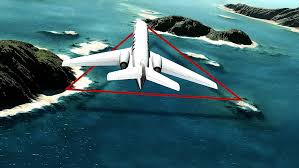In June 2023, the world was gripped by the disappearance and subsequent implosion of the Titan, a deep-sea submersible operated by OceanGate Expeditions. The incident, which claimed the lives of all five people onboard, raised critical questions about engineering safety, oversight in extreme environments, and the growing commercialization of deep-sea exploration.
The Titan Submersible: A New Frontier
The Titan was not a typical submersible. Built by OceanGate, it was designed to carry a small crew to the depths of the Atlantic Ocean, including visits to the wreckage of the RMS Titanic—a site resting about 12,500 feet (approximately 3,800 meters) below the ocean’s surface.
Constructed using a combination of carbon fiber and titanium, the Titan was intended to be lightweight yet capable of withstanding the intense pressures found in the deep ocean. However, this choice of materials—especially the use of carbon fiber in deep-sea conditions—was a subject of controversy within the marine engineering community.
Timeline of Events
-
June 18, 2023: Titan launched from its support ship, the Polar Prince, to explore the Titanic wreck. About 1 hour and 45 minutes into the dive, communication was lost.
-
June 19-21, 2023: An international search and rescue mission was launched, involving ships, aircraft, underwater drones, and even the U.S. Navy.
-
June 22, 2023: Debris consistent with a catastrophic implosion was discovered near the Titanic site, confirming the fate of the submersible.
Understanding the Implosion
At the depth of the Titanic wreck, the pressure is over 380 times greater than atmospheric pressure at sea level. Any structural failure in a submersible at that depth leads to an almost instantaneous implosion, where the hull collapses inward at supersonic speeds, obliterating the cabin and its contents in milliseconds.
Experts believe the Titan suffered a failure in its pressure hull, likely due to repeated stress and fatigue in the carbon fiber material. Unlike titanium or steel, carbon fiber can degrade over time, especially under cyclical loads like those experienced during deep dives.
Controversies and Criticisms
OceanGate had faced scrutiny even before the Titan tragedy:
-
Engineering Oversight: The company chose not to have the submersible certified by a recognized third-party maritime organization (like ABS or DNV), claiming that innovation often requires breaking rules.
-
Whistleblower Concerns: A former employee had reportedly warned about potential safety issues and was fired after raising concerns about the hull’s integrity.
-
Risk Waivers: Passengers signed extensive waivers acknowledging the experimental nature of the voyage.
The Human Cost
The five men onboard were:
-
Stockton Rush – CEO of OceanGate and pilot of the submersible.
-
Hamish Harding – British billionaire explorer.
-
Shahzada Dawood and his son Suleman Dawood – members of a prominent Pakistani family.
-
Paul-Henri Nargeolet – Renowned French Titanic expert.
Their deaths underscored the extreme risks involved in deep-sea travel and sparked global conversations about the boundaries of exploration.
Lessons for the Future
The Titan implosion is a tragic reminder that engineering rigor, transparency, and oversight are non-negotiable—especially when human lives are involved. As we continue pushing boundaries in deep-sea and space exploration, the Titan serves as both a cautionary tale and a call to prioritize safety over spectacle.
Conclusion
The Titan disaster wasn’t just about a failed machine—it was about the ambitions of a new era of private exploration colliding with the uncompromising forces of nature. As technology evolves, so must our standards and systems of accountability.
The deep ocean still holds many mysteries, but one truth remains clear: without respect for science, materials, and safety, even the boldest ventures can end in tragedy.
